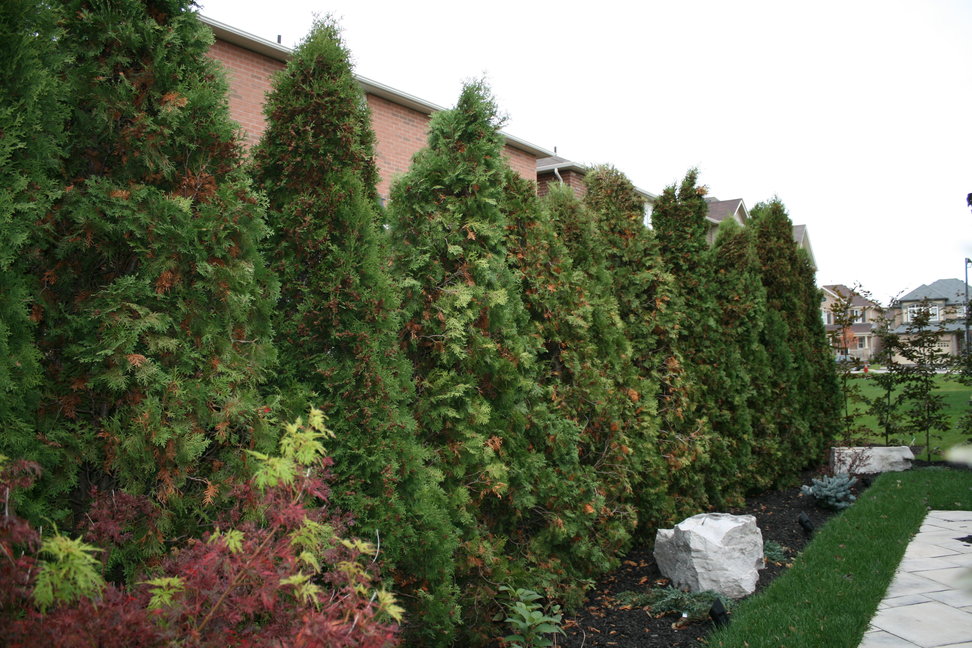It is common for evergreens to “flag” – usually in late summer to early autumn. Evergreen flagging is when tiny parts of the evergreen’s foliage turn yellow, orange, or slightly brown – often in a very spotty or patchy fashion. This is very different than when a evergreen actually dies. In that case, the tree would be almost completely brown from top to bottom.
To compare, evergreen flagging can be thought of as the equivalent to leaves changing colour and falling off of deciduous trees in the fall. It’s perfectly natural and in most cases it is not indicative of any health concerns for your tree. All evergreens lose foliage. If you walk through a local park that has mature evergreens, you will most certainly see evidence of needle/foliage loss at the base.

The cause of this is generally attributed to a bit of stress on the tree. This makes evergreen flagging especially common after:
- Hot/dry summers
- Cold but sunny winters (lack of overcast conditions)
- The year following transplant
This foliage affected generally dies off during the winter months. By the spring, the melting snow and rain have typically knocked it off to the base of the tree. If you notice this is not the case with your evergreen, you can run your hands through the evergreen in the spring to assist with knocking off the discoloured foliage. Then, rake it up from around the base to ensure the foliage doesn’t accumulate at the collar of the tree and pile up against the bark (which can cause it to rot). Also, be sure to keep the evergreen watered and apply a slow-release fertilizer in the spring.
It’s important to remember that it is natural for evergreens to go through this process. Evergreen flagging stretches across young and old specimens, newly planted or well established, and cedars planted in either exposed or sheltered locations.
For further information please feel free to visit us in store.




